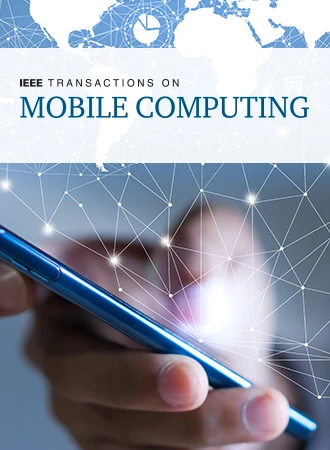SWIPTNet:基于GNN和迁移学习的SWIPTNet统一深度学习框架
IF 9.2
2区 计算机科学
Q1 COMPUTER SCIENCE, INFORMATION SYSTEMS
引用次数: 0
摘要
研究了基于深度学习的无线信息与电力同步传输(SWIPT)方法。针对功率分割(PS)接收机和时间交换(TS)接收机,分别提出了服务质量(QoS)约束的和速率最大化问题,并采用统一的图神经网络(SWIPTNet)模型求解。为了提高SWIPTNet的性能,我们首先提出了一种单一类型的输出方法,以降低学习复杂度,促进QoS约束的满足,然后利用拉普拉斯变换利用结构信息增强输入特征。此外,我们还采用了多头关注和分层连接来增强特征提取。此外,我们提出了在PS和TS接收器之间迁移学习到SWIPTNet的实现。消融研究显示了SWIPTNet中关键成分的有效性。数值结果还表明,SWIPTNet能够以毫秒级的推理速度实现接近最优的性能,比传统的优化算法快得多。我们还通过快速收敛和表达能力的提高证明了迁移学习的有效性。本文章由计算机程序翻译,如有差异,请以英文原文为准。
SWIPTNet: A Unified Deep Learning Framework for SWIPT Based on GNN and Transfer Learning
This paper investigates the deep learning based approaches for simultaneous wireless information and power transfer (SWIPT). The quality-of-service (QoS) constrained sum-rate maximization problems are, respectively, formulated for power-splitting (PS) receivers and time-switching (TS) receivers and solved by a unified graph neural network (GNN) based model termed SWIPT net (SWIPTNet). To improve the performance of SWIPTNet, we first propose a single-type output method to reduce the learning complexity and facilitate the satisfaction of QoS constraints, and then, utilize the Laplace transform to enhance input features with the structural information. Besides, we adopt the multi-head attention and layer connection to enhance feature extracting. Furthermore, we present the implementation of transfer learning to the SWIPTNet between PS and TS receivers. Ablation studies show the effectiveness of key components in the SWIPTNet. Numerical results also demonstrate the capability of SWIPTNet in achieving near-optimal performance with millisecond-level inference speed which is much faster than the traditional optimization algorithms. We also show the effectiveness of transfer learning via fast convergence and expressive capability improvement.
求助全文
通过发布文献求助,成功后即可免费获取论文全文。
去求助
来源期刊
CiteScore
12.90
自引率
2.50%
发文量
403
审稿时长
6.6 months
期刊介绍:
IEEE Transactions on Mobile Computing addresses key technical issues related to various aspects of mobile computing. This includes (a) architectures, (b) support services, (c) algorithm/protocol design and analysis, (d) mobile environments, (e) mobile communication systems, (f) applications, and (g) emerging technologies. Topics of interest span a wide range, covering aspects like mobile networks and hosts, mobility management, multimedia, operating system support, power management, online and mobile environments, security, scalability, reliability, and emerging technologies such as wearable computers, body area networks, and wireless sensor networks. The journal serves as a comprehensive platform for advancements in mobile computing research.

 求助内容:
求助内容: 应助结果提醒方式:
应助结果提醒方式:


